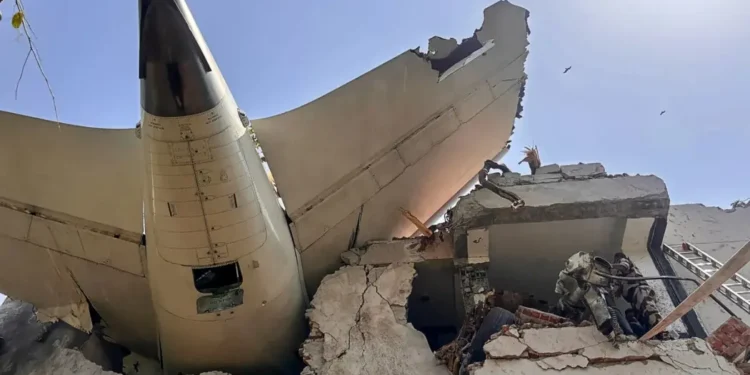Lagatar24 Desk
New Delhi: Nearly a month after the tragic Air India Flight 171 crash, which claimed the lives of 241 people on board and over 30 on the ground in Ahmedabad, the Aircraft Accident Investigation Bureau (AAIB) is set to release its preliminary report. The report, anticipated within days, could provide the first official insights into the causes behind India’s deadliest aviation disaster in recent years.
Investigators Focus on Fuel Control Switches
According to reports from Bloomberg and other sources familiar with the probe, investigators have retrieved and successfully extracted data from both the cockpit voice recorder and the flight data recorder. While the preliminary report is expected to be factual and restrained in tone, it could shed light on critical factors contributing to the crash, though no blame will be assigned at this stage.
One major line of inquiry involves the cockpit’s fuel control switches, located on the centre console. These switches regulate fuel flow to the Boeing 787 Dreamliner’s GE Aerospace engines. The Wall Street Journal reported that preliminary findings suggest the switches may have been turned off, although it remains unclear whether this occurred accidentally or intentionally. John Cox, a former airline pilot and CEO of Safety Operating Systems, stated, “If you move those switches from run to cutoff, those engines will stop running in literally seconds.”
Final Moments and Possible Engine Shutdown
The crash occurred on June 12, just 30 seconds after takeoff. Videos showed the aircraft initially lifting off normally, but aerospace analyst Bjorn Fehrm observed that the landing gear was never retracted, and the aircraft began to lose thrust almost immediately. “That’s improbable like hell,” he said, commenting on the rare possibility of simultaneous failure of both engines.
The plane, fully loaded with fuel, crashed into a student hostel near the airport, causing a massive explosion. The pilot, Captain Sumeet Sabharwal, had issued a mayday call moments before the crash. According to aviation experts, the crew likely had insufficient time and altitude to attempt an engine restart, even though the emergency ram air turbine was deployed, indicating complete power loss.
No Mechanical Fault Identified Yet
So far, no evidence of mechanical or design faults has emerged regarding the Boeing 787 aircraft or its GE engines. Neither the Federal Aviation Administration (FAA) nor manufacturers have issued safety advisories, which typically follow if systemic issues are detected.
Investigators Examine Pilot Experience and Human Factors
The investigation is also scrutinizing the crew’s background and experience, a standard procedure in major aviation probes. Captain Sabharwal had logged approximately 8,200 flight hours, while First Officer Clive Kunder had around 1,100 hours, according to the Directorate General of Civil Aviation.
Aviation experts have noted that accidental shutdowns have occurred in the past. In one 1980s incident involving a Delta Air Lines Boeing 767, a pilot mistakenly turned off both engines but managed to restart them due to the aircraft’s higher cruising altitude—a luxury unavailable to the Air India crew given their low altitude during takeoff.
Critical Discussions Ahead
As the investigation progresses, the preliminary findings are expected to ignite crucial discussions around potential human error, aircraft systems design, and emergency protocols in modern aviation. The full investigation is likely to continue for several months before final conclusions are drawn.








